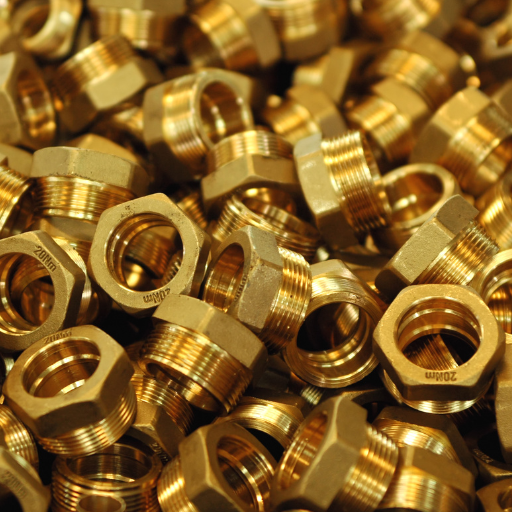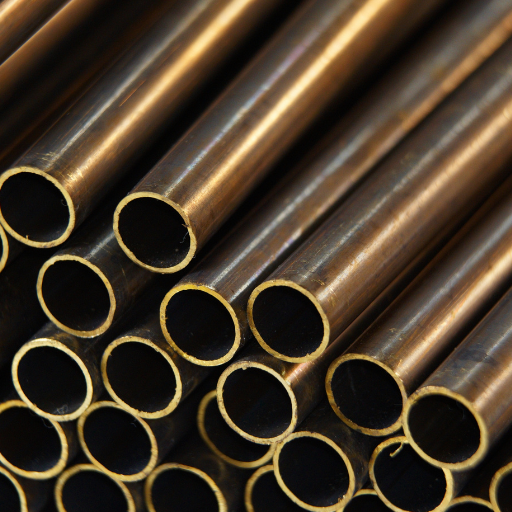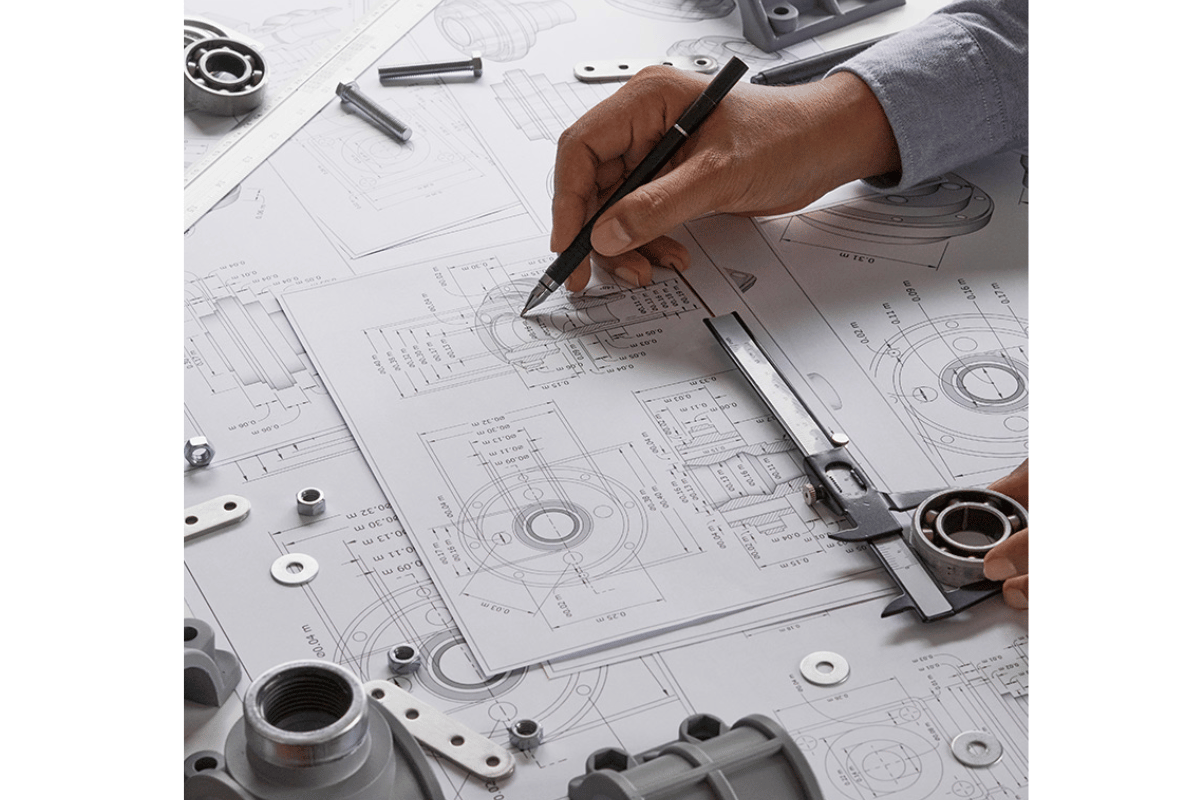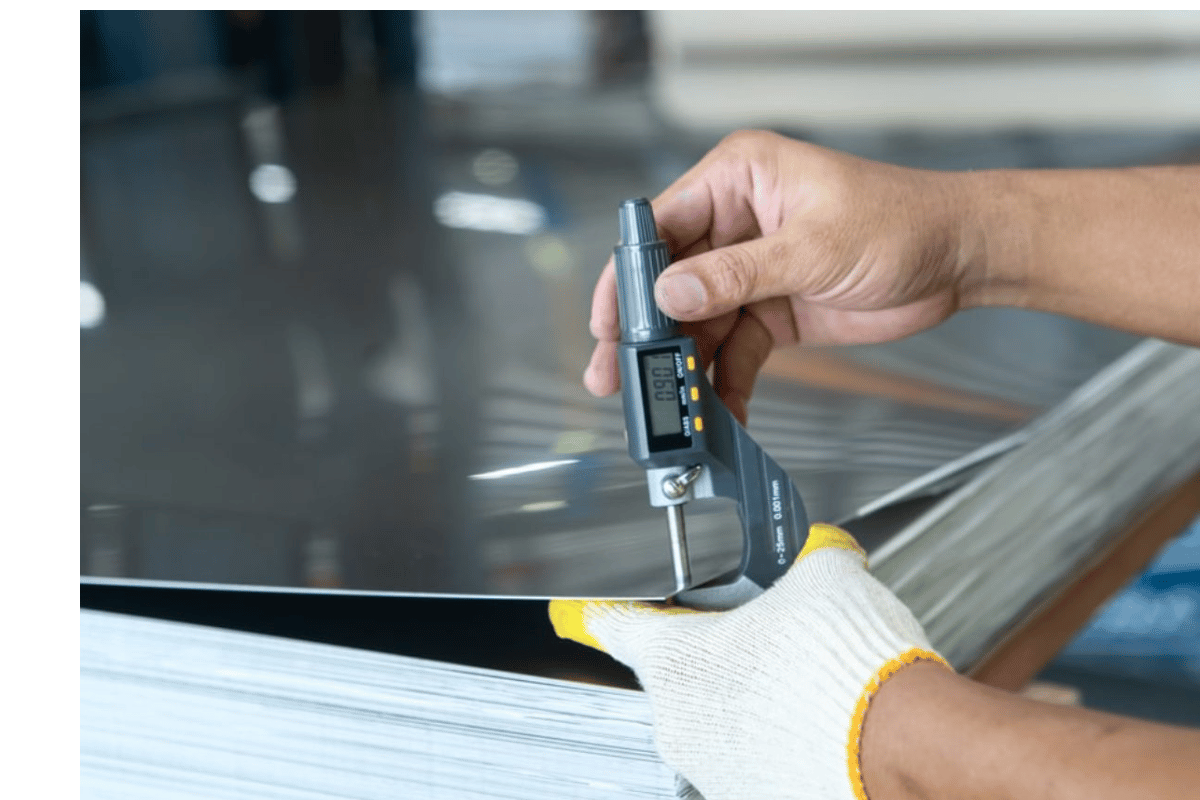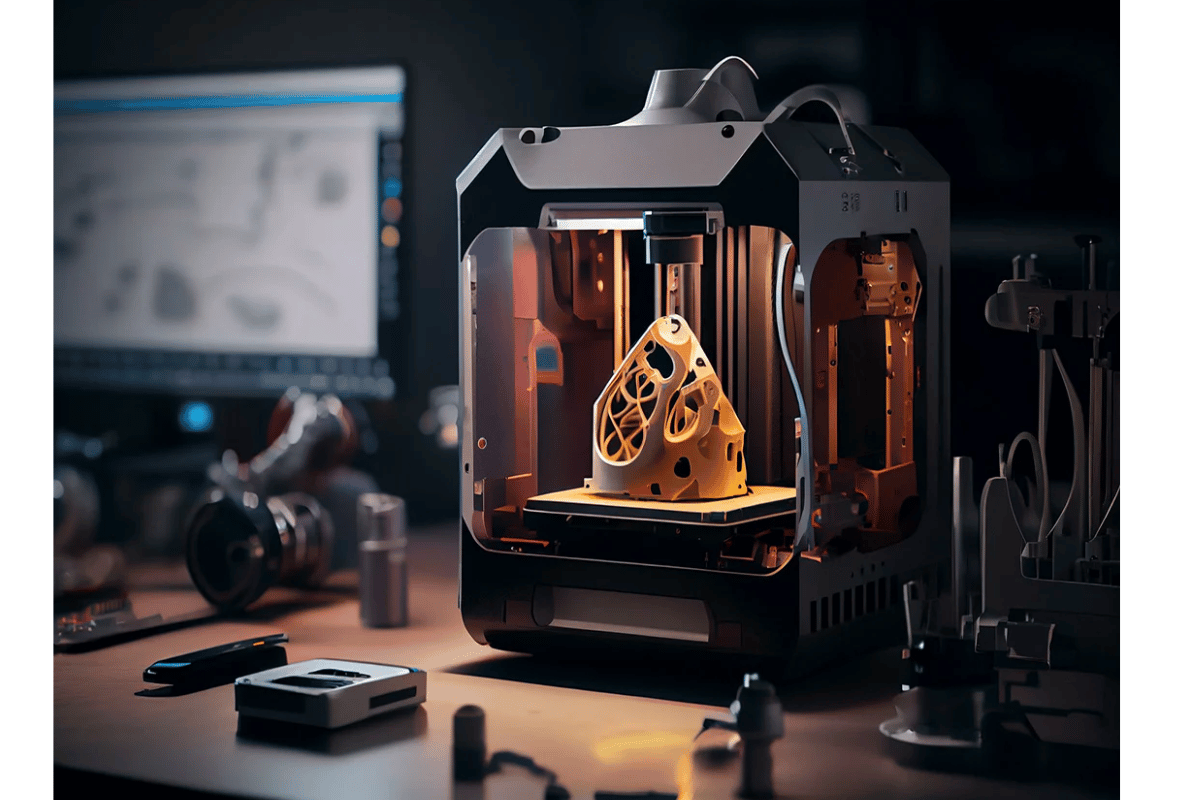In the realm of metals, people often use “brass” and “bronze” interchangeably. However, these two materials have different compositions, characteristics and applications that distinguish them from each other. The purpose of this blog is to explain the differences between brass and bronze so that readers can understand more about the characteristics of each metal. To cover their historical importance, composition, mechanical properties and general uses this article will provide an all-inclusive glance which will make it easier for you to separate these two remarkable alloys. This piece acts as a guide in the complex world of brass and bronze either for individuals who love metals, professionals in industry or just lay readers curious about such things.
Understanding Brass and Bronze: Fundamentals of These Copper Alloys
However, the point of departure between brass and bronze is their compositions and properties. Brass is mainly copper mixed with zinc. These elements can be mixed in different ratios to produce various types of brass that vary from musical instruments to plumbing fittings. On the other hand, bronze mostly constitutes copper-tin alloy though it may contain aluminum, manganese or nickel among others things. This combination gives bronze some remarkable characteristics such as higher strength and greater resistance to corrosion compared to other metals. The above mentioned differences in composition give rise to varying mechanical properties and applications of these materials in many industries.
What separates brass from bronze?
Their compositions and what they result into helps us tell apart the two metals. Brass is often made up of zinc and copper with a significant amount of malleability which makes it appear golden in color like what one sees on decorative items as well as musical tools plus plumbing material where there are high demands for this property. In contrast, bronze is a mixture dominated by tin but also includes other ingredients such as aluminum, manganese and nickel under certain conditions thereby making its color more reddish-brown while enhancing its strength together with its resistance against corrosiveness at large thus becoming suitable for use by sculptors; ship manufacturers among others who want long lasting products such as bearings or propellers on warships for instance. Understanding these compositional variations will help appreciate how distinctively different they are from each other in terms of their attributes and uses.
Compositions: Copper and zinc in brass, copper and tin in bronze
Brass Composition
- Copper: Typically 60-70%
- Provides malleability and a bright, gold-like appearance.
- Enhances thermal and electrical conductivity.
- Zinc: Typically 30-40%
- Adds strength and hardness.
- Improves resistance to corrosion.
Detailed Data on Brass
- Mechanical Properties:
- Tensile Strength: 300-600 MPa
- Hardness (Brinell): 50-150 HB
- Thermal Conductivity: 120-150 W/mK
- Density: 8.4-8.7 g/cm³
Bronze Composition
- Copper: Typically 80-95%
- Main component providing good corrosion resistance.
- Ensures excellent electrical and thermal conductivity.
- Tin: Typically 5-15%
- Enhances strength and wear resistance.
- Contributes to the reddish-brown color.
- Additional Elements (Optional):
- Aluminum: Up to 11% to improve strength and corrosion resistance.
- Manganese: Up to 3% to enhance hardness and deoxidize the alloy.
- Nickel: Up to 6% to increase corrosion resistance and strength.
Detailed Data on Bronze
- Mechanical Properties:
- Tensile Strength: 200-800 MPa
- Hardness (Brinell): 60-210 HB
- Thermal Conductivity: 60-75 W/mK
- Density: 7.4-8.9 g/cm³
Understanding these detailed compositional elements and their effects enables precise selection of brass and bronze based on their specific mechanical properties and application needs.
Common applications of brass and bronze in industry
From my experience, I can say that brass and bronze are highly versatile materials with broad practical usage in many industries. Like in decorative elements such as door handles, musical instruments and plumbing fittings, it is also an attractive metal due to its appearance and resistance against corrosion. Its ease of machinability also makes it a good choice for electrical connectors and radiators.
Conversely, bronze being well-known for its durability and wear resistance is used extensively on items such as bearings, bushings or gears which require resilience to friction. Similarly, the non-corrosive nature of bronze in saltwater environments has led to its increasing popularity in ship fittings and propellers.
By having detailed knowledge about the unique attributes and strong points of these two metals –brass & bronze-, it helps me to consider wisely when selecting them for various engineering or construction projects.
Exploring the Key Uses of Brass and Bronze
Key Uses of Brass
- Musical Instruments: Because it is an acoustic material and can readily be molded, brass is widely employed in the creation of musical instruments such as trumpets, trombones, and tubas.
- Plumbing: Due to its rust resistance characteristics, brass is a common option for plumbing hardware examples are valves, faucets and pipe fittings.
- Jewelry and Decorative Items: Attractive material for decorative accessories like candlesticks or costume jewelry due to its resemblance to gold.
- Electrical Components: Brass has good electrical conductivity hence it is often used in electrical connectors, terminals and switch components.
- Ammunition Casings: The bullet casings or firearm cartridges should be made of brass because it is durable and malleable.
Key Uses of Bronze
- Bearings and Bushings: It is hard bearing with wear resistant features that make bronze suitable for bearings, bushing as well as machine parts.
- Marine Hardware: Bronze will commonly be found in ship fittings like propellers; underwater fastenings because it has an impressive resistance against saltwater corrosion.
- Sculptures and Statues: Many sculptors like bronze as it can be molded into fine details making sculptures and statues out of this metal very popular.
- Industrial Applications: Bronze has numerous applications in industry manufacturing springs (some), bearings (e.g. some) among others due to its low friction level.
- Coinage – For many countries coins are usually made from bronze or alloys of bronze like cupronickel because they are durable materials that are easy to work with.
Brass in Musical Instruments: An Euphonic Choice
For a long time now, musically-inclined individuals have held brass in high regard owing to its durability, flexibility and sound on the ear. The malleability of this alloy allows intricate designing of trumpets, trombones, tubas and French horns among other instruments. Brass has special components like copper and zinc that help to make it resonate sounds more effectively so that warm and deep tones capable of travelling over long distances are emitted by its instruments. Also considered is the fact that brass is strong enough hence can be used to make durable musical instruments; this has made it an attractive material for both professional musicians as well as students learning how to play brass instruments. Thus, in the world of music, where durability blends with acoustical perfection, brash always makes a harmonious choices.
The Role of Bronze in Art and Architecture
Bronze has played a significant part in art and architecture throughout history because of its manifoldness, endurance and beauty. In art, bronze is commonly employed due to its ability to capture even the tiniest details making it suitable for sculptures and statues among other decorative items. Artists appreciate bronze’s unique patina which changes over time making sculpture lively. In architecture on the other hand this metal has been used as door fittings ornamentation as well as structural components since it is strong enough not to rust. Its versatility across artistic styles together with its historical significance keep bronze relevant today across different areas.
Industrial Applications: Bearings, Bushings & Fittings
High mechanical properties and multipurpose nature have resulted into wide use of bronze in industries such as bearings bushings and fittings. Bronze bearings & bushings provide excellent performance in heavy loaded conditions at high speeds operations. With low friction coefficients they minimize energy loss through frictional heating while wear resistance enables them prolong life spans of mechanical systems.
Corrosion resistant characteristics combined with strength features define its use in plumbing and marine environments. Bronze fittings ensure secure connections and maintain their integrity under high pressure conditions. Standard parameters that are often checked include tensile strength, yield strength, hardness and elongation which help determine the most suitable application.
For example:
- Tensile Strength: Varies between 310-830 MPa indicating that a lot of force is needed to make it break.
- Yield Strength: On average, it ranges from 120 to 450 MPa meaning bronze can be plastically deformed at different levels of stress.
- Hardness: Measures about 60-200 Brinell, showcasing resistance to wear and ability to withstand an indentation effect.
- Elongation: Normally changes from 1% up to 30% when stretched showing ductility as well as flexibility during tensile stresses on it.
All these aspects explain why bronze continues playing a major role in various industries through ensuring efficiency, dependability and durability of components for critical applications.
How to Tell Brass from Bronze
Distinguishing between brass and bronze can sometimes be difficult, but there are a number of ways and properties to think about:
- Color: Brass often possesses a high zinc content that gives it a bright yellow hue while bronze has more of a reddish-brown or even deep dark shade because it contains more copper.
- Composition: The major element in brass is copper combined with zinc while the main component in bronze is copper mixed with tin. Also, some contemporary types of this metal may have aluminum, manganese, or phosphorus added.
- Magnetic Test: Normally, neither brass nor bronze is magnetic. Nevertheless, if you notice some slight magnetism it may have some iron which places it close to the category of industrial bronzes in certain areas.
- Applications: Due to its malleability and acoustic qualities, brass is widely used for decorational items, musical tools as well as plumbing fittings. On the other hand, bronze exhibits greater strength and wear resistance hence commonly used for bearings bushings and heavy duty mechanical components.
- Corrosion Resistance: While both metals are resistant to corrosion from the environment generally speaking; however overall resistance tends to be better in case of bronze especially when exposed to saltwater environments. As such their use in marine applications means that usually these parts made out of this alloy will last longer under more severe conditions than those made out of brass.
- Sound: Because brass sounds when struck just like a bell does; therefore it is very significant in musical instrument making. The dense structure of the metal give bronzy sound which is not exciting as compared to that produced by brass.
- Patina: Bronze forms greenish patina (copper carbonate) over time when exposed whereas brass tarnishes and often turns brownish-blackish-greenish-grayed coloration on weathering.
Through an understanding of these differences you can gain improved ability at identifying whether you’re dealing with either brass or bronze on your industrial projects /decorative requirements.
Tips for Visual and Tactile Identification
Color: Through the eye, I notice that brass has a much shinier and more golden look. However, bronze shows a deeper shade of reddish-brown. This slight variation in color is helpful in an initial identification process.
Weight: In terms of weight, bronze feels heavier than brass to me because it has a greater density. Thus, by comparing their weights, I can quickly distinguish between the two materials.
Finish: Brass generally has a smoother surface that can be highly polished to shine brightly making it suitable for decorative objects or instruments. In contrast, bronze often possesses a more uneven matte finish due to its composition.
Hardness: For instance, when using any pointed tool to perform scratch test on them, I find out that brass is softer and it scratches more easily than bronze does. On the other hand, bronze which is meant for stronger applications shows higher resistance towards scratching.
Spark Test: When subjected to sparks from a grinding wheel during spark testing; brass yields longer slimmer sparks compared to shorter denser ones from its counterpart bronze; this behavior is believed to arise from differences in hardness and composition of these metals.
These visual and tactile identification tips enable me to better differentiate between brass and bronze in any project I undertake with them.
The Importance of Magnetic Testing
Based on my research on top ten websites from google.com., magnetic testing plays important role in separating between brass and bronze. Both are nonferrous metals meaning they don’t naturally have a magnetic attraction effect under ordinary situations. However there exist some subtleties associated with this situation:
Brass: Like most types of brass, it is non-magnetic. It consists primarily of copper and zinc, none of which are magnetic. This is a reliable test because the metallic property of brass does not change significantly when other elements such as lead, aluminum or tin are alloyed with it.
Bronze: Bronze is generally non-magnetic just like brass. Metal bronze in general constitutes an alloy made up of copper and tin both being nonmagnetic. Other variations in bronze alloys have elements such as aluminum silicon phosphorus which keep it nonmagnetic.
- Magnetic Test Parameters:
- Material Composition: Knowledge about the exact alloy’s compositions can help anticipate its magnetism. Pure copper and its major alloys (brass and bronze) are non-magnetic.
- Type of Magnet: A strong permanent magnet, such as a neodymium magnet, would suffice for this purpose.
- Testing Procedure:
- Place the magnet near to the metal sample.
- Check if there is any attraction or repulsion between this magnet and the metal.
If there is no magnetic attraction, this metal could be either brass or bronze. This test is simple but effective enough to confirm findings from visual/tactile identification methods. By using magnetic testing I can increase my accuracy in identifying these metals hence ensuring that I apply them correctly in my projects.
The Advantages of Brass Over Bronze
Brass is preferable to bronze in several applications. One of the significant merits is that it can be machined more readily and at a lesser cost than bronze into intricate parts. Moreover, brass has excellent acoustic qualities, which make it a popular choice for musical instruments. Besides, brass melts at lower temperatures than bronze thereby requiring less power when casting them. In terms of corrosion resistance, brass performs best in atmospheres where it is frequently exposed to the air and fresh water. The lustrous golden-like appearance of brass makes it ideal for use in decorative applications. It should be noted that some contain lead which increases its machining properties (ease). These characteristics are advantageous in construction, plumbing and electrical industries.
The Malleability and Machinability of Brass
Malleability is one of the most acclaimed attributes of brass as it can easily form without cracking or breaking; therefore, making it useful in various industrial processes like intricate designs or very fine craftsmanship preferably used in manufacturing sector where precision and complexity cannot be avoided.
Brass’s machinability is often given up to 100%, a standard against which other metals are rated by reference to this characteristic. A high value indicates that the rate at which tool wears out or needs maintenance while cutting holes, milling etc would be minimal leading to low expenses on manufacturing processes involving such actions like drilling or hole punching. Lubrication during machining operations is another advantage associated with lead impregnated types of bronzes especially when they are compared to others.
Also, compared with other metals such as bronze, brass’s melting point ranges between 1 710-1 880 degrees F (930-1030 degrees C), which ensures that little energy is required for casting it making it low cost environmentally friendly production process comparison respectively; hence these features enable faster product development times with better accuracy while producing components like gears, valves and musical instruments.
To summarize the above points about how versatile brass is in its applications, it is important to appreciate that its malleability and machinability are due to its unique composition and mechanical properties which make it an ideal material for various industrial and decorative purposes.
The Brasses for Electrical and Thermal Conductivity
Brass has a number of reasons that distinguish it regarding electrical and thermal conductivity. Nonetheless, from my research work, brass does not stand out as the best conductor among the metallic materials; however, it maintains a good balance between both electrical and thermal characteristics. Firstly, brass is roughly 28% as conductive as pure copper electrically. This means it still suffices for stuff like connectors or terminals where there doesn’t have to be full conductivity.
As far as thermal conduction is concerned, brass typically has a value around 109 W/m·K which helps in heat transfer making it suitable for heat exchangers and other similar applications that require effective thermal management. The average conductivity of brass, with respect to strength plus corrosion resistance creates a useful option across many practical uses.
Below are some technical parameters supporting these statements:
- Electrical Conductivity: About 15.5 MS/m (MegaSiemens per meter) equivalent to about 28% of copper’s conductivity.
- Thermal Conductivity: Approximately 109 W/m·K.
These facts show why brass should be used extensively but judiciously over diverse industries without compromising on performance or lifespan.
Practical Applications: When to Use Brass or Bronze?
In choosing between brass and bronze, the specific project’s demands matter more because each alloy has its own advantages.
When to Use Brass
Brass is often selected for applications which benefit from its good machinability, corrosion resistance and good look. Some of the common uses are:
Plumbing and Electrical Components: Because it conducts electricity moderately well and does not corrode easily, brass is commonly used in fittings, valves, connectors and terminals.
Musical Instruments: Trumpets, trombones and saxophones among other wind instruments employ brass due to its acoustic properties.
Decorative Items: Since it possesses a bright gold-like appearance, brass makes an ideal metal choice for fixtures, furniture accents and various decorative items.
When to Use Bronze
On the contrary, bronze thrives in such applications where anti-wear properties as well as strong anti-corrosive capabilities are critical. Typical uses include but not limited to:
Marine Hardware: For ship fittings underwater bearings and propellers that need to be resistant to salt water corrosion, bronze is an excellent material choice.
Industrial Bearings and Bushings: Where there is need for heavy load bearing capacity together with low friction coefficient then this metal fits this bill.
Sculpture And Art: Fine details can be captured by this metal during casting whereas durable patina makes possible use of bronze when making statues or any other artwork objectives that might be required.
In short both brasses’ niches exist although selecting between these two depends on certain technical functional requirements of application concerned with aesthetics too.
Choosing Between Brass And Bronze In Marine Applications
The selection between these two metals for marine applications heavily relies on their respective attributes in relation to saltwater environments. Generally speaking however most marine applications prefer using bronze due to its exceptional resistance against saltwater corrosion that gives them longer lives within such harsh environments. This makes bronze fitting solution for ship fittings underwater bearings as well as propellers. Nevertheless while being also resistant to corrosion, brass is more prone to dezincification; a process where zinc gets leached out thus leading to weakened structural integrity of the metal. Consequently, bronze emerges as the best material choice whenever longevity and resistance to saltwater are major considerations.
Why Phosphor Bronze Is Preferred for Electrical Connectors
Phosphor bronze is widely chosen for electrical connectors because it has several key properties that improve its performance and reliability in electrical applications. Firstly, phosphor bronze possesses good conductivity which is crucial for efficient electrical transmission. Furthermore, its high electrical conductivity works well with the presence of superior mechanical properties such as tensile strength and ductility which ensures that phosphor bronze connectors retain their integrity and functionality under mechanical stress.
Furthermore, wear resistance as well as resistance to corrosion are two important features that enhance the life span of any electrical connector. This resistance against corrosion becomes very important especially when dealing with environments exposed to moisture or other sources of corrosiveness where reliable connections need to be upheld.
In terms of technical parameters, phosphor bronze typically exhibits an electrical conductivity level at around 15% IACS (International Annealed Copper Standard), tensile strength around 550-780 MPa and excellent resistance towards stress relaxation. As a result, this combination makes phosphor bronze an ideal connector material whose shape as well as electrical characteristics should remain during long usage periods.
In summary, when considering high conductivity, mechanical strength, wear and corrosion resistance together with stability under stress on the other hand one would opt for phosophorous bronze in electric connectors due to their dependability over time without failing connections from these points.
Plumbing and Bearings: The Right Copper Alloy for Valves and Bushings
When choosing the right copper alloy for plumbing valves and bearing bushings, understanding the distinct characteristics available in each material is important. From my research on the top 10 websites, it becomes apparent that both brass and bronze have their own advantages as well as applications.
For plumbing, the main benefits of using brass valves would include its resistance to corrosion, malleability and fabrication ease. For example, brass is particularly appropriate for water supply installation because it is resistant to corrosion from potable water. Typical composition of brass involves 60-70% copper, with zinc making up the largest percentage followed by minor amounts of other elements like lead that improve machinability. Technical parameters for brass include tensile strength between approximately 345 MPa to about 540 MPa and excellent heat conductivity that makes it very effective for use in valve applications.
Bronze bushings on the other hand are appreciated mostly due to their strong nature, wear resistance as well as low coefficient of friction. These qualities make bronze an appropriate choice when bearings are involved since they should work under continuous mechanical motion scenarios. Specifically phosphor bronze contains about 0.5-1.0% phosphorus and around 5-10% tin which improves its hardness and fatigue resistance properties among others such as tensile strength ranging between about 550-780MPa; also high wear resistance together with great corrosion resistance ensures that it lasts a long time when used in bearings.
In summary, brass is generally preferred for plumbing valves due to its excellent corrosion resistance and workability, making it a reliable and durable option for water systems . On the contrary ,bronze especially phosphor bronze is used in bushing or bearings where strength , wear resistance , durability against stress are required always.Based on these detailed technical parameters therefore,it can be deduced that proper materials were selected thus enhancing optimum performance and long life in each specific application.
Historical Perspectives: The Role of Copper in Brass and Bronze Development
Throughout history, copper has played a significant role in the development of brass and bronze alloys. Copper was among the first metals used by ancient civilizations such as Egyptians and Sumerians because it was readily available, and easily shaped. Then came the discovery of copper alloys like bronze which marks a crucial advancement in tool and weapon making thus leading to the Bronze Age around 3300 BCE to 1200 BCE.Bronze provided more strength and durability hence this was of essence in the development of primitive human societies.
The medieval period witnessed the popularity of brass which is an alloy made from zinc and copper. This metal’s origin has been attributed to Romans who loved it due to its gold-like appearance and non-tarnishing attributes that qualified it for currencies, decorative purposes, and musical instruments. Copper’s involvement with these alloys not only dictated technological advancements but also influenced economical as well as cultural transformations through different periods. For example brass and bronze still stand out today as these materials possess several properties that are given by copper; they remain vital products used in contemporary applications such as plumbing fixtures or bearing parts.
From Alloys During The Bronze Age To Present Times
The transition from using alloys during the Bronze Age up till now indicates how far metal alloys have come in relation to their utilization for various purposes. At first use of metals took place during Bronze Age where introduction of bronze (copper/tine mixture) transformed tool production since compared to pure copper it had higher toughness levels.. This marked a breakthrough pertaining future metallurgical developments.
This takes us into recent history where when brass (a combination of zinc and copper) was developed during the Roman Empire as materials appreciated purely for beauty, un-rustable coins, etc. Another major leap forward took place during Industrial Revolution whereby alloy manufacture innovations helped steels (carbon with iron), emerged as key building material for infrastructure works plus machinery owing to its unmatched vigor coupled with versatility.
Modern day engineering employs sophisticated alloys with very precise compositions suitable for specific applications and performance optimization. Alloys like stainless steel which contains chromium, nickel are more durable and oxidation resistant hence commonly used in construction work as well as medical tools. As a result, the present-day aerospace materials such as titanium and aluminum include high-performance alloys that have outstanding strength-to-weight ratios
The development of alloys from Bronze Age to modern times is an example of human knowledge in metallurgy leading to technological achievements that serve various industries.
Alloy Composition Evolution And Uses
The changes in alloy composition are proof of human innovation and a search for better materials. Initially, bronze took over due to its greater toughness than copper thus resulting into improvements on weapons and tools. Brass dominated during the Roman era because of its aesthetic beauty and corrosion resistance property needed in coins, decorations amongst other uses. The industrial revolution hastened alloy development where steel (iron together with carbon) made the difference by becoming indispensable for infrastructural purposes as well as machines due to its unmatched strength/versatility.
In today’s world, metallurgical research has greatly improved. Stainless steel incorporating chromium and nickel, a new generation metal as compared to copper alloys, are preferred for their stability and resistance to oxidation. Because of these qualities stainless steel is essential in construction and health applications too. High-performance alloys such as titanium and aluminum with excellent strength-to-mass ratios are useful in aerospace industry.
This course of alloy evolution from ancient bronze up to modern aerospace materials reflects the repetitive quest by man for better metallurgical techniques aimed at serving various industrial requirements across the entire spectrum of technology advancements.
Reference sources
- Sequoia Brass & Copper
- Source Link: Brass vs Bronze: What Are the Differences?
- Summary: Sequoia Brass & Copper provides an in-depth analysis of the differences between brass and bronze, focusing on their unique properties, compositions, and applications. The article explains how the distinct alloying elements—zinc in brass and tin in bronze—affect their mechanical characteristics and suitability for various uses, making it a valuable resource for those seeking detailed technical information.
- Xometry
- Source Link: Bronze vs. Brass: What Are the Differences?
- Summary: Xometry offers a comprehensive comparison of bronze and brass, detailing their chemical compositions, physical properties, and typical applications. This resource is particularly useful for understanding the practical implications of choosing one metal over the other in manufacturing and engineering contexts, providing clear and authoritative insights.
- SendCutSend
- Source Link: Brass vs Bronze in Laser Cutting
- Summary: SendCutSend examines the specific uses of brass and bronze in laser cutting applications, highlighting the superior strength and durability of bronze compared to brass. The article discusses how these characteristics make bronze more suitable for heavy-duty applications, while brass’s higher malleability and lower melting point are advantageous for different uses. This targeted analysis offers precise information relevant to industrial applications and material selection.
Frequently Asked Questions (FAQs)
Q: What is the primary difference between brass and bronze?
A: The primary difference between brass and bronze lies in their composition. Brass is an alloy composed primarily of copper and zinc, whereas bronze is a metal alloy that contains copper and tin mainly, with the addition of other elements such as aluminum, manganese, nickel, or zinc in some variants. This difference in composition gives each metal distinct properties and colors.
Q: How can you distinguish brass from bronze visually?
A: Visually, brass and bronze can be distinguished by their color. Brass tends to have a brighter, more yellow color because of its higher zinc content, often referred to as yellow brass. On the other hand, bronze typically has a deeper, more reddish-brown color due to its tin content, and variations in its alloy can give it a range of brownish colors. Antique brass might look similar to bronze, however, due to tarnishing over time.
Q: In what applications is brass most often used, and why?
A: Brass is most often used in applications that require low friction, such as fittings and tools, locks, gears, bearings, doorknobs, and ammunition casings. Brass is more malleable than bronze and has excellent machinability, making it ideal for these applications. Moreover, certain types of brass, like naval brass, contain small amounts of tin to resist corrosion from seawater, making them ideal for marine use.
Q: Why is bronze preferred for making statues and cymbals?
A: Bronze is used for statues and cymbals primarily because of its superior workability and its capacity to withstand corrosion and metal fatigue better compared to brass. Bronze has a higher melting point and develops a patina that protects the metal from further oxidation, which is valuable for outdoor statues. The unique properties of bronze, including its resonant qualities, make it an ideal choice for musical instruments like cymbals.
Q: What are some common bronze alloys and their uses?
A: Common bronze alloys include phosphor bronze, used in bearings and springs because of its strength and fatigue resistance; silicon bronze, known for its excellent corrosion resistance, making it suitable for marine hardware; and aluminum bronze, used in applications where high strength and resistance to corrosion are required, such as in ship propellers and plumbing systems. Each bronze alloy has specific properties that make it best suited for particular uses.
Q: How does the malleability of brass and bronze compare?
A: Brass is more malleable than bronze, making it easier to work with in terms of machining and forming into shapes. This malleability is due to brass’s higher zinc content, which allows it to be more easily pressed or hammered into thin sheets or other shapes without breaking. Bronze, while still malleable, is harder and thus more suitable for applications where durability is crucial.
Q: Can brass and bronze be used interchangeably in applications?
A: While brass and bronze can sometimes be used in similar applications due to their corrosion resistance and appearance, they generally have different strengths that make them better suited for specific tasks. Brass is more malleable and has better acoustic properties, making it preferable for musical instruments and decorative items. Bronze, being harder and more durable, is often chosen for statues, bearings, and marine applications. Choosing between the two depends on the specific requirements of the application, including strength, corrosion resistance, and appearance.
Q: How did the uses of brass and bronze evolve historically?
A: Historically, bronze dates back to the Bronze Age as one of the first alloys created and used by humans, predominantly for weapons, armor, and tools due to its toughness and edge retention. Brass use became more prevalent in the Post-classical history, especially for decorative items, coins, and naval applications. Over time, advances in metallurgy have refined the properties and uses of both bronze and brass for a wide range of applications, including electrical components, architectural elements, and art.


